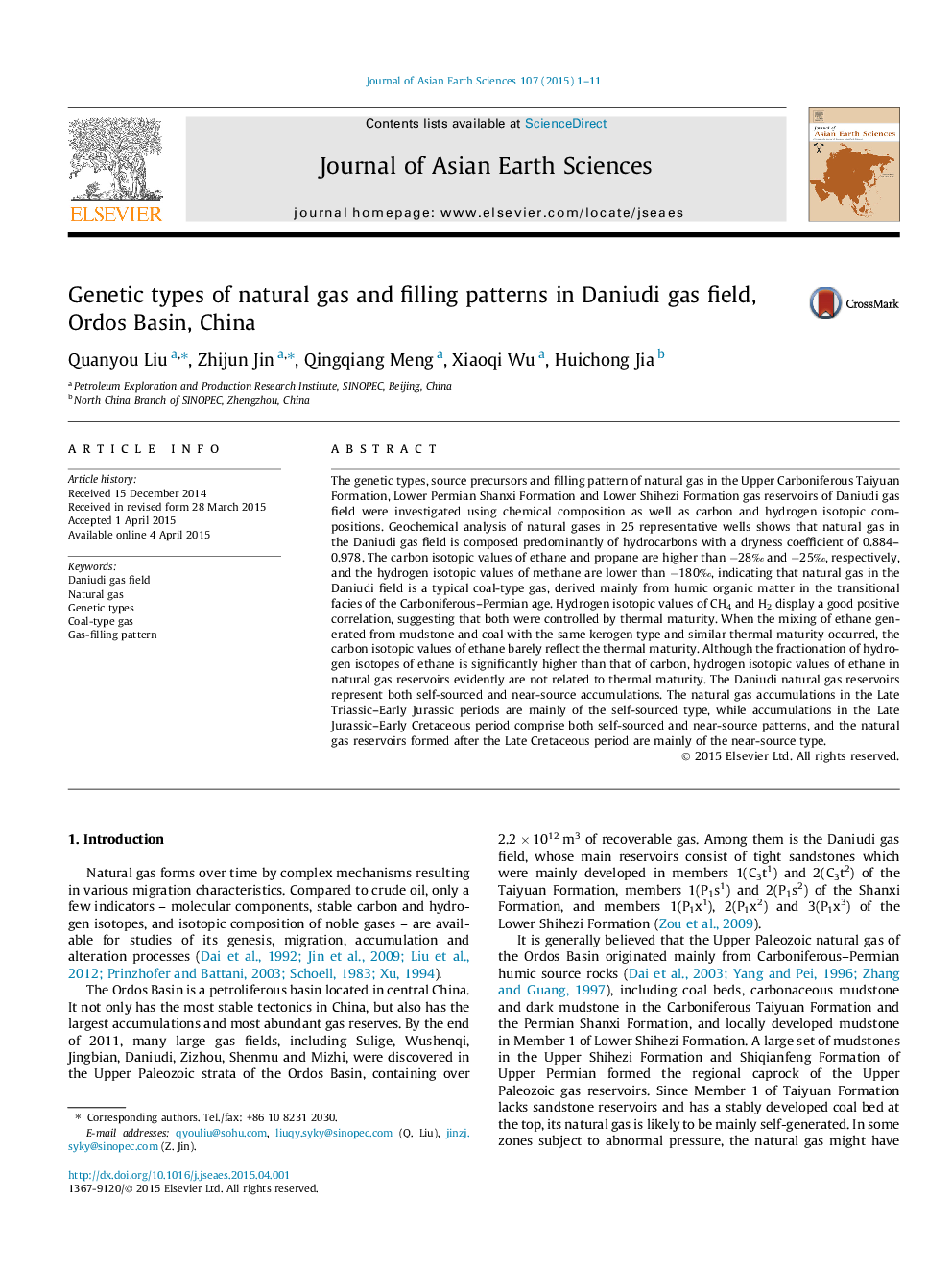| Article ID | Journal | Published Year | Pages | File Type |
|---|---|---|---|---|
| 4730373 | Journal of Asian Earth Sciences | 2015 | 11 Pages |
•The origin of natural gas in the Daniudi gas field, Ordos Basin, is explored.•Carbon and hydrogen isotopes of natural gas are clarified.•Different gas reservoirs represent both self-sourced and near-source accumulations.
The genetic types, source precursors and filling pattern of natural gas in the Upper Carboniferous Taiyuan Formation, Lower Permian Shanxi Formation and Lower Shihezi Formation gas reservoirs of Daniudi gas field were investigated using chemical composition as well as carbon and hydrogen isotopic compositions. Geochemical analysis of natural gases in 25 representative wells shows that natural gas in the Daniudi gas field is composed predominantly of hydrocarbons with a dryness coefficient of 0.884–0.978. The carbon isotopic values of ethane and propane are higher than −28‰ and −25‰, respectively, and the hydrogen isotopic values of methane are lower than −180‰, indicating that natural gas in the Daniudi field is a typical coal-type gas, derived mainly from humic organic matter in the transitional facies of the Carboniferous–Permian age. Hydrogen isotopic values of CH4 and H2 display a good positive correlation, suggesting that both were controlled by thermal maturity. When the mixing of ethane generated from mudstone and coal with the same kerogen type and similar thermal maturity occurred, the carbon isotopic values of ethane barely reflect the thermal maturity. Although the fractionation of hydrogen isotopes of ethane is significantly higher than that of carbon, hydrogen isotopic values of ethane in natural gas reservoirs evidently are not related to thermal maturity. The Daniudi natural gas reservoirs represent both self-sourced and near-source accumulations. The natural gas accumulations in the Late Triassic–Early Jurassic periods are mainly of the self-sourced type, while accumulations in the Late Jurassic–Early Cretaceous period comprise both self-sourced and near-source patterns, and the natural gas reservoirs formed after the Late Cretaceous period are mainly of the near-source type.
